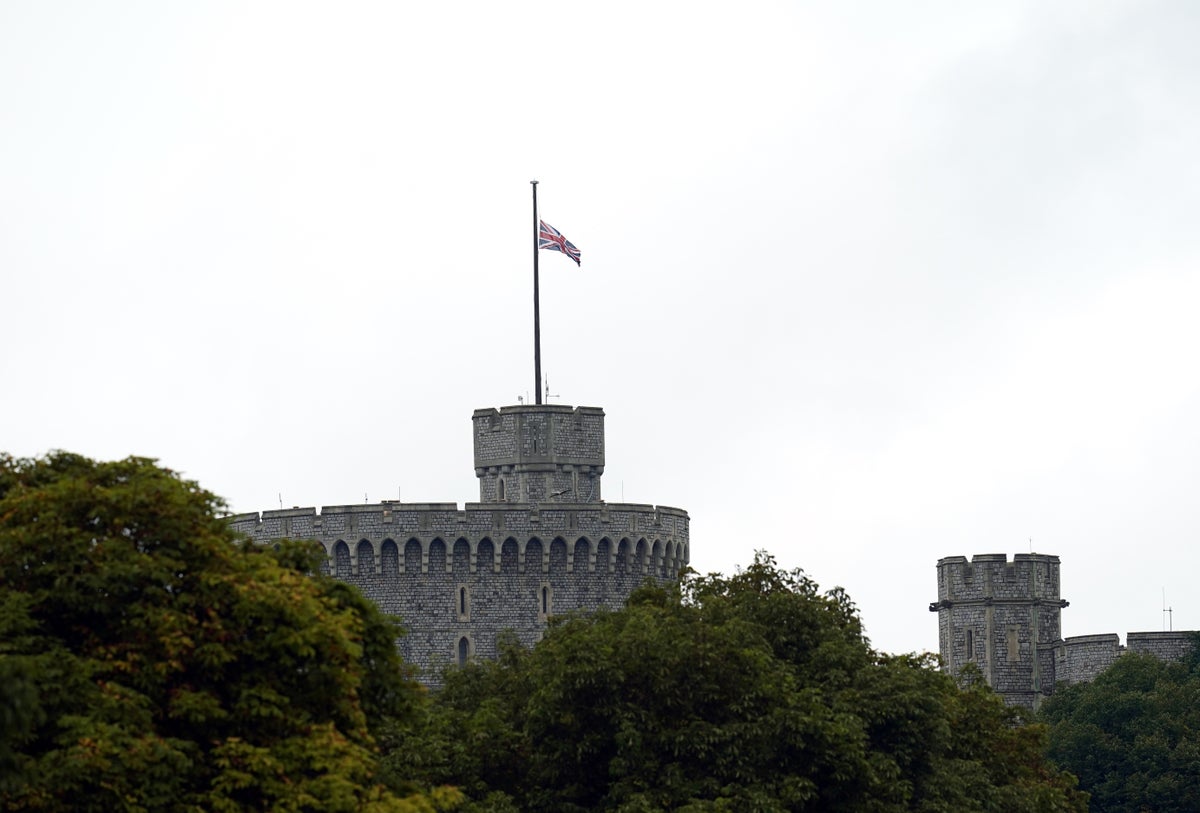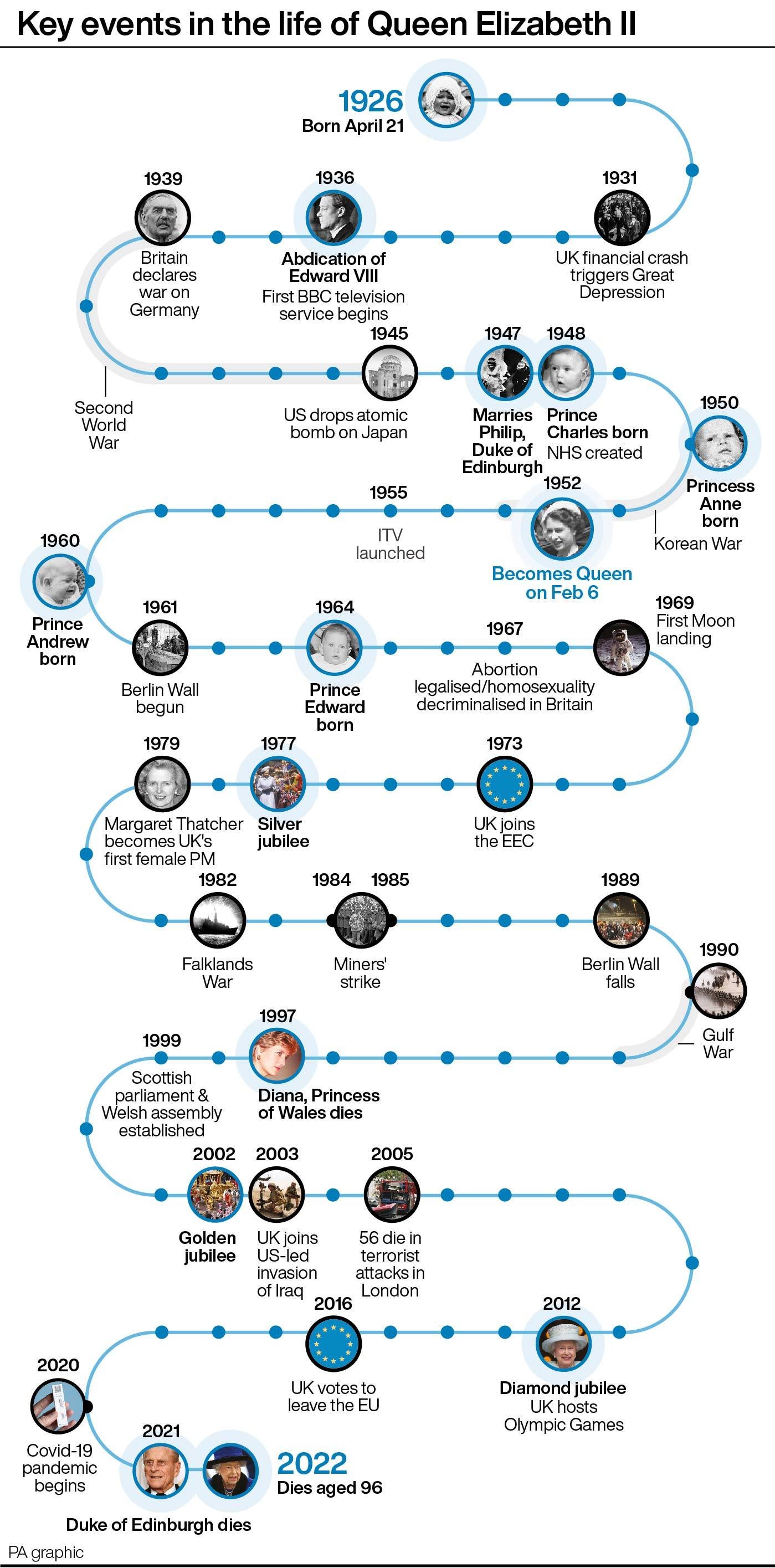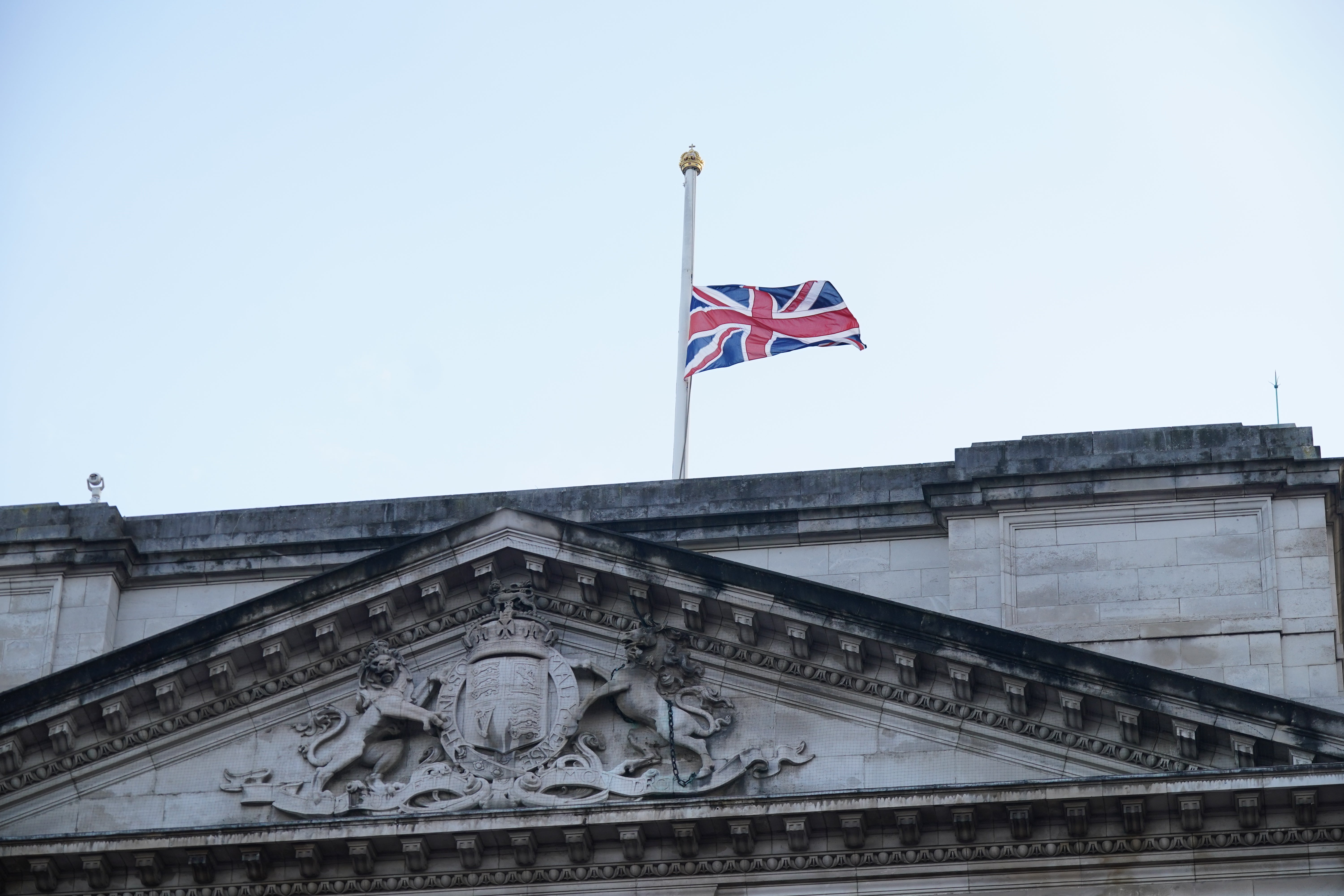
Union flags on key public buildings and royal residences will be raised to full-mast for 26 hours over the weekend in recognition of Charles’s new reign.
The new King will be formally proclaimed monarch at a historic Accession Council in the State Apartments of St James’s Palace at 10am on Saturday.
A Principal Proclamation will then be read by the Garter King of Arms from the balcony at St James’s an hour later at 11am.

This will be followed by proclamations in the City of London at the Royal Exchange at midday on Saturday, and in Scotland, Northern Ireland and Wales at midday on Sunday.
Buckingham Palace said union flags will be flown at full-mast from the time of the Principal Proclamation at St James’s Palace until one hour after the proclamations in Scotland, Northern Ireland and Wales.
This is “in recognition of the new Sovereign”, the Palace said.
At this point – which will be 1pm on Sunday – union flags will return to half-mast in mourning for the death of the Queen.

They will stay at half-mast until 8am the day after the Queen’s funeral, in accordance with guidance issued by the Department for Digital, Culture, Media and Sport (DCMS).
This is likely to be held on September 19.
The guidance also advises that any non-official flags, which include for example the rainbow flag or Armed Forces flag, should be taken down and replaced with a Union flag.
The DCMS guidance applies to Government buildings but is made public so that others can follow suit if they wish, and shared with partners such as local authorities.
It said the Union flags and all other official flags should be raised to full-mast between the hours of 9am and 10.30am on Saturday so they are in position for the 11am Principal Proclamation.
Following a royal death and during other periods of national mourning, Union flags are flown at half-mast on royal buildings when the monarch is not in residence.
Half-mast means that flags are flown a third of the way down the flagpole, with at least the height of the flag between the top of the flag and the top of the pole.
The Royal Standard is never flown at half-mast, even after the Queen’s death, as there is always a monarch on the throne – with the role passing to her son the King.







